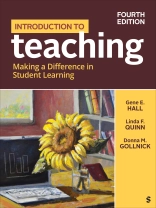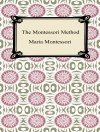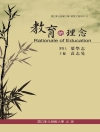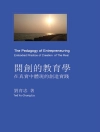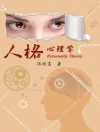Grounded in the realities and complexities of today’s schools, Introduction to Teaching: Making a Difference in Student Learning, Fourth Edition is the ideal text for aspiring teachers. Acclaimed authors Gene E. Hall, Linda F. Quinn, and Donna M. Gollnick thoroughly prepare students to make a difference as teachers, presenting first-hand stories and evidence-based practices while offering a student-centered approach to learning. From true-to-life challenges that teachers will face—reduced funding, low retention, and changing standards—to the inspiration and joy they will discover throughout their teaching careers, this text paints a realistic picture of the real life of a teacher in a post-pandemic era.
İçerik tablosu
Part I: Today’s Teachers, Students, and Schools
Chapter 1: Becoming a Teacher
Educator Interview: Mr. Luis Zaldaña
Why Teach?
Why Should Teachers Be Considered Professionals?
What Do Teachers Need to Know?
Why Should You Track Your Growth Toward Becoming a Teacher?
What Should a Beginning Teacher Do?
Chapter 2: Today’s Students
Teacher Interview: Ms. Chelsie Acosta
How Racially and Ethnically Diverse Are U.S. Schools?
How Does Family Income Affect a Student’s School Experiences?
What If Students’ Languages Do Not Include English?
How Do Students’ Genders Interact With Education?
How Is Sexual Orientation Addressed in Schools?
How Does Religion Affect the Classroom?
Chapter 3: The Exceptionalities of Learners
Teacher Interview: Ms. Kia Glimps-Smith
Do All Students Develop in the Same Way?
Who Are the Exceptional Students?
How Should Schools Be Serving Students With Disabilities?
How Can Teachers Meet the Needs of All Students?
How Can Educators Dismantle Ableism in the Classroom?
Chapter 4: The Social Context of Schools
Teacher Interview: Ms. Nicole Mc Gill
How Does Social Context Influence Learning?
What Is the Relationship of Social Context to Students’ Behaviors and Learning?
How Does Social Context Influence What Is Taught?
What Is the Role of Social-Emotional Learning in Education?
Chapter 5: Families and Communities
Educator Interview: Ms. Doriel Larrier
How Does the Public View Education in the Public Schools?
Who Are the Families of Our Students?
What Does Culture Have to Do With Education?
How Are Students’ Cultures Reflected in Schools?
How Does School Choice Open Options for Families?
How Can Teachers Work Effectively With Families and Communities?
Part II: The Foundations of Education
Chapter 6: History of Schools in the United States
Teacher Interview: Mr. John Arthur
How Did Public Schools Come to Be?
How Has the Educational System Contributed to Equality?
Why Are Schools Designed Around the Age of Students?
What Has Influenced the School Curriculum?
How Have Teachers Evolved?
Chapter 7: Developing a Philosophy of Teaching and Learning
Teacher Interview: Mr. Matthew Balaban
How Do Teachers Develop Personal Attitudes and Beliefs Regarding Teaching and Learning?
How Do Students Learn?
Why Should Teachers Carefully Examine Ideas?
How Does Educational Psychology Help Teachers Understand Student Learning?
How Does Understanding of a Variety of Philosophical Perspectives Help Teachers Help Students Learn?
Chapter 8: Organizing and Financing Schools for Learning
Principal Interview: Mr. Ricardo Estrada
How Are Schools Staffed and Organized?
What Is the Relationship of Schools to School Districts and the State?
What Is the Role of the Federal Government in Education?
How Is Governance Different From the Structures of Government?
How Are Schools Paid For?
How Do Schools Spend the Money?
What Are Some of the Key Organization and Finance Issues and Challenges?
Chapter 9: The Law as It Relates to Teaching and Learning
Educator Interview: Mrs. Kristy Anderson
Interview With a Second Legal Expert
What Are the Foundational Elements of the Law?
What Are Key Legal Issues Related to Uses of Technology and Social Media?
How Have the Three Enduring Legal Dilemmas of Religion, School Finance, and Segregation Evolved?
What Are Legal Rights and Protections of Students?
What Are the Legal Rights, Responsibilities, and Liabilities of Teachers?
Part III: Teaching for Student Learning
Chapter 10: Curriculum, Standards, and Benchmarks
Educator Interview: Mrs. Desiree Tilger
What Is Curriculum?
What Are the Connections Among Standards, Benchmarks, and Curriculum?
What Should Teachers Know About Standards?
How Might Knowledge of Standards and Benchmarks in Curriculum Improve Teaching Practice?
Why Should Teachers Have Knowledge of Standards?
Chapter 11: Managing the Classroom and Student Behavior
Teacher Interview: Dr. Felicia Bucher
What Are Some Approaches to Classroom Management?
How Do You Build a Personal Classroom Management Approach?
What Constitutes a Well-Managed Classroom?
What Is the Connection Between Discipline and Management?
Chapter 12: Teaching Strategies
Educator Interview: Mrs. Jessica Anderson
Why Are There So Many Ways to Teach?
What Is a Teaching Strategy?
When Are Teaching Strategies Direct or Indirect?
What Makes Teaching Strategies Work?
How Are Different Strategies Used for Different Purposes?
Chapter 13: Assessing Student Learning and Using the Results
Educator Interview: Mr. Travis Hall
What Are Characteristics of High-Quality Tests?
What Does the Process of Assessing Entail?
How Do Teachers and Students Use Formative Assessments to Adjust Instruction and Improve Learning?
What Are Some Useful Ways to Gather Evidence About Student Learning?
What Are Key Assessment Issues and Challenges?
Part IV: Becoming Tomorrow’s Highly Effective Teacher
Chapter 14: Succeeding in Your Teacher Education Program, and Beyond
Teacher Interview: Ms. Julie La Guardia
What Are Keys to Succeeding in Your Teacher Education Program?
How Can You Use a Research-Based Framework to Understand Your Concerns?
What Are the Keys to Being Hired as a Beginning Teacher?
In What Ways Can Candidates and Teachers Be Leaders?
Where Are Places to Find the Joy of Teaching?
Yazar hakkında
Donna M. Gollnick is the finance manager for the National Association for Multicultural Education (NAME) and is the public member on the Commission on the Accreditation of Early Childhood Higher Education Programs of the National Association for the Education of Young Children (NAEYC). Previously, she was the Chief Academic Officer at the TEACH-NOW Graduate School of Education (now Moreland University), an online teacher education program in Washington, DC, that prepares teachers around the world. Dr. Gollnick worked in non-profit associations of teacher educators as the senior vice president for accreditation at the National Council for Accreditation of Teacher Education (NCATE) and director of professional development at the American Association of Colleges of Teacher Education (AACTE). She began her teaching career immediately after receiving her bachelor’s degree in Carmel and then, South Bend, Indiana. She is coauthor with Philip Chinn of Multicultural Education in a Pluralistic Society, which is in its 12th edition, and is a coauthor of the textbook Introduction to the Foundations of American Education, in its 17th edition. Dr. Gollnick is a past president of the National Association for Multicultural Education (NAME). She has been recognized as a Distinguished Alumna by the School of Family and Consumer Sciences at Purdue University and the Rossier School of Education at the University of Southern California. AACTE honored her as an “Advocate for Justice” in 1998.
